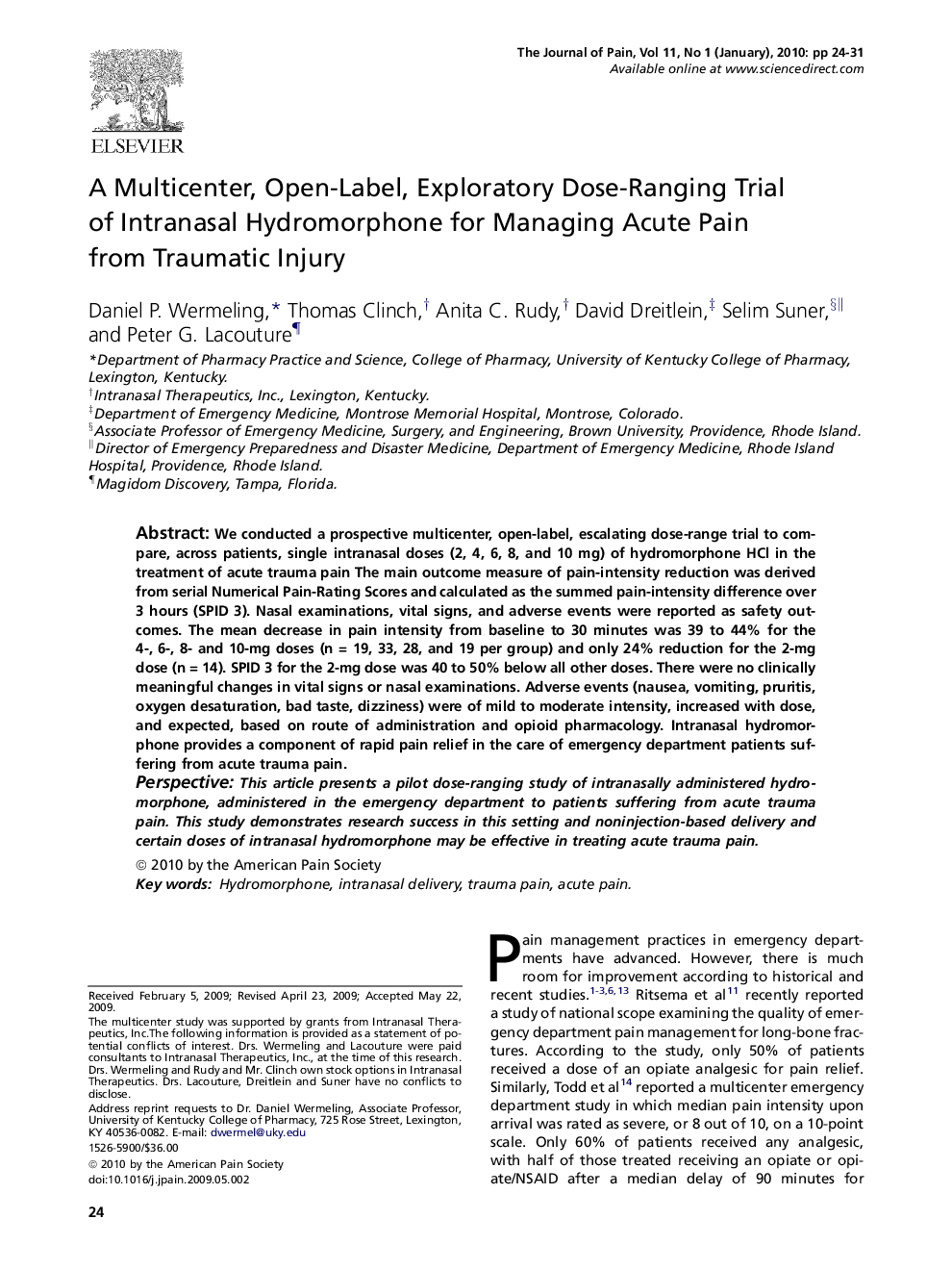| Article ID | Journal | Published Year | Pages | File Type |
|---|---|---|---|---|
| 2729496 | The Journal of Pain | 2010 | 8 Pages |
We conducted a prospective multicenter, open-label, escalating dose-range trial to compare, across patients, single intranasal doses (2, 4, 6, 8, and 10 mg) of hydromorphone HCl in the treatment of acute trauma pain The main outcome measure of pain-intensity reduction was derived from serial Numerical Pain-Rating Scores and calculated as the summed pain-intensity difference over 3 hours (SPID 3). Nasal examinations, vital signs, and adverse events were reported as safety outcomes. The mean decrease in pain intensity from baseline to 30 minutes was 39 to 44% for the 4-, 6-, 8- and 10-mg doses (n = 19, 33, 28, and 19 per group) and only 24% reduction for the 2-mg dose (n = 14). SPID 3 for the 2-mg dose was 40 to 50% below all other doses. There were no clinically meaningful changes in vital signs or nasal examinations. Adverse events (nausea, vomiting, pruritis, oxygen desaturation, bad taste, dizziness) were of mild to moderate intensity, increased with dose, and expected, based on route of administration and opioid pharmacology. Intranasal hydromorphone provides a component of rapid pain relief in the care of emergency department patients suffering from acute trauma pain.PerspectiveThis article presents a pilot dose-ranging study of intranasally administered hydromorphone, administered in the emergency department to patients suffering from acute trauma pain. This study demonstrates research success in this setting and noninjection-based delivery and certain doses of intranasal hydromorphone may be effective in treating acute trauma pain.
